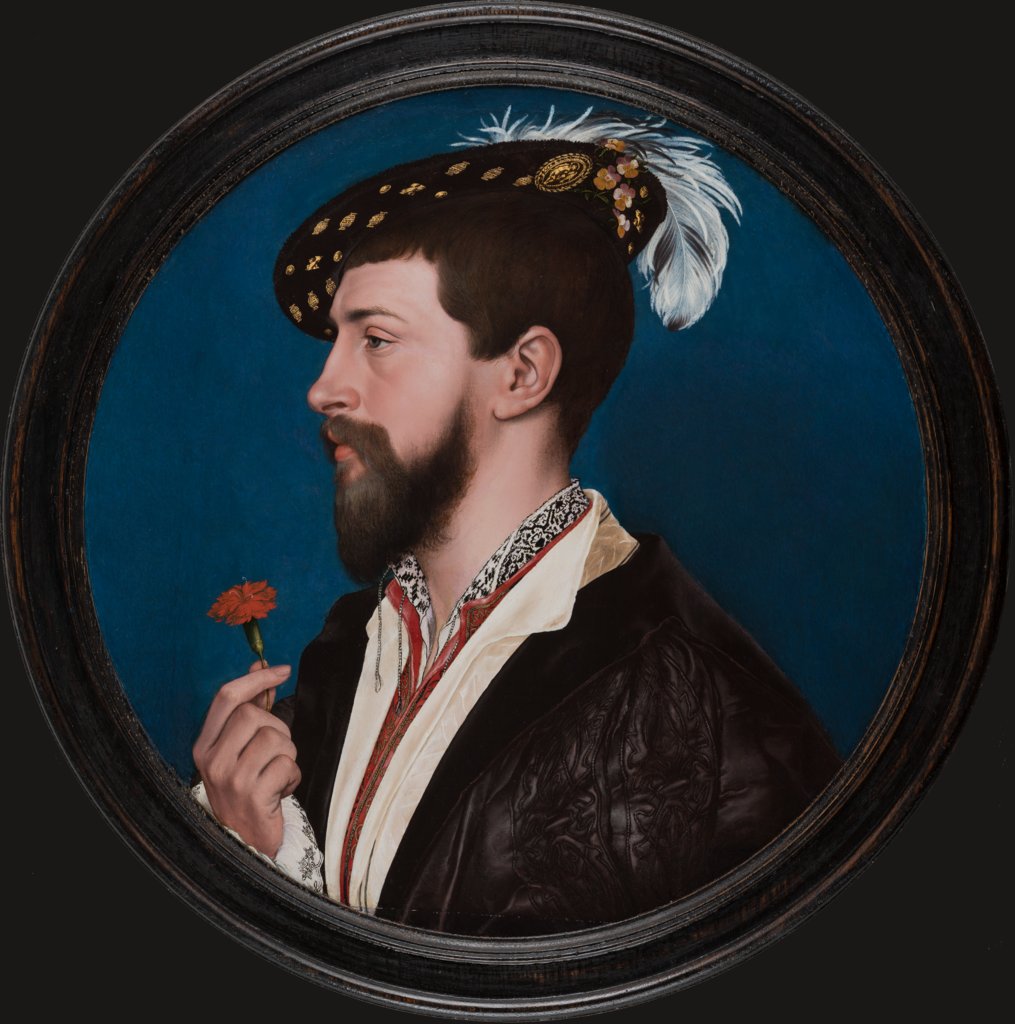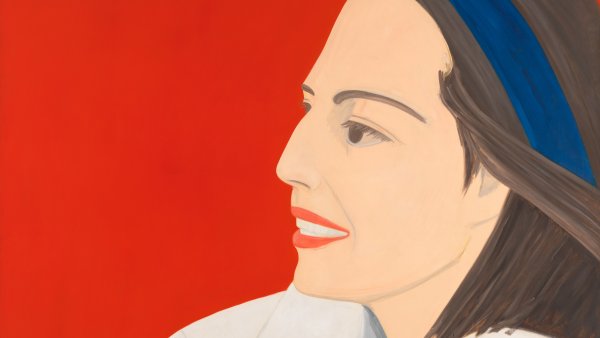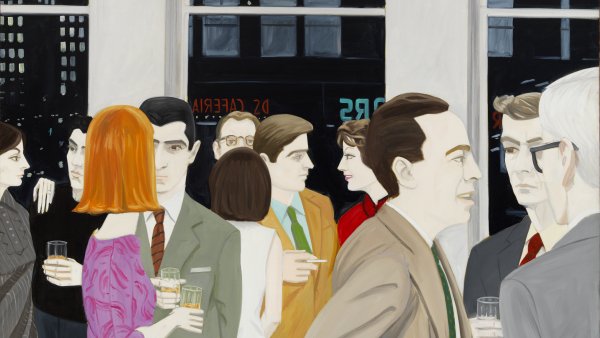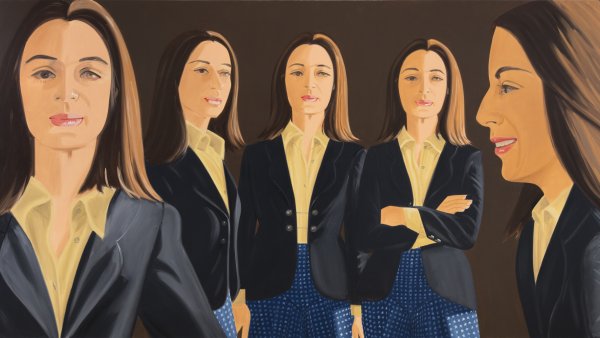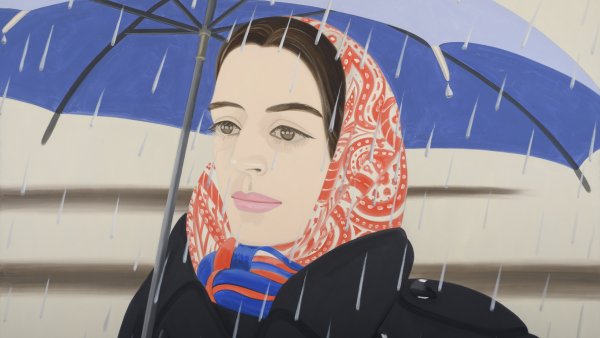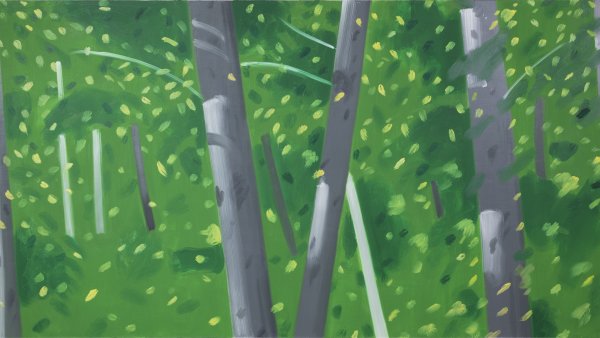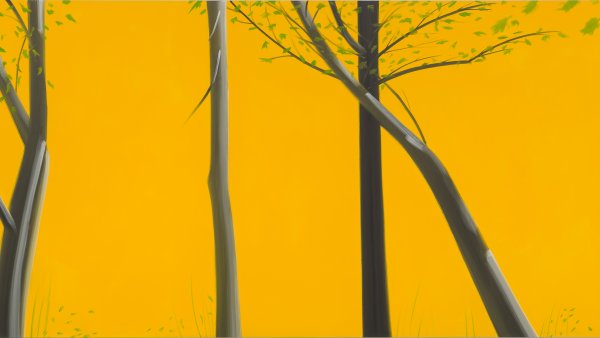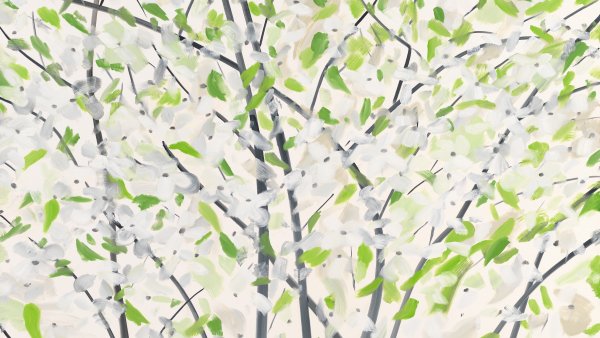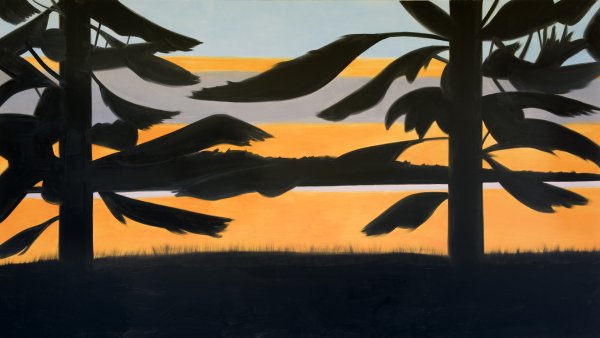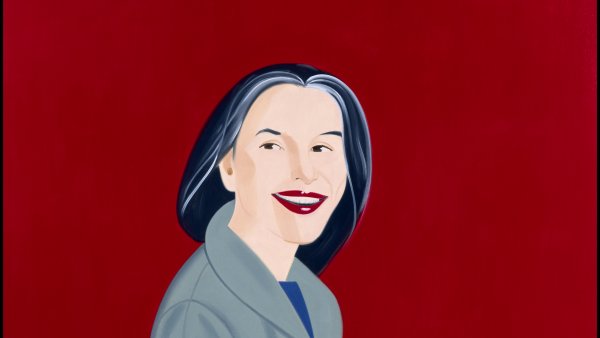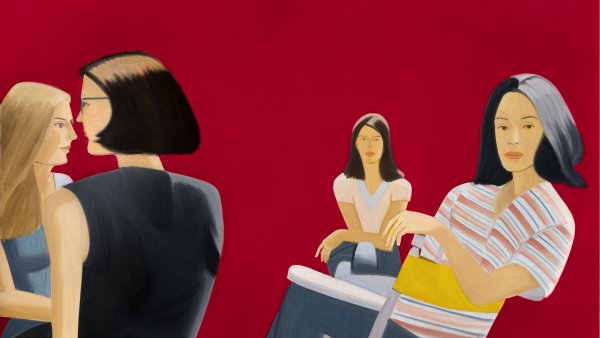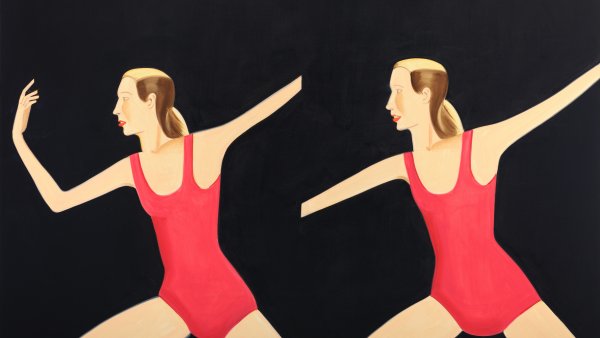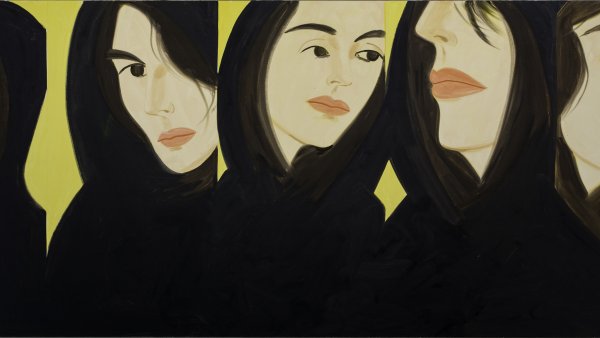![]()
*Norton Simon Museum * *November 19, 2021 - February 28, 2022* The Norton Simon Museum has announcesd a special installation of Édouard Manet’s three *Philosopher *paintings: *Beggar with Oysters (Philosopher)* and *Beggar with a Duffle Coat (Philosopher)*, both dated 1865/67 and on loan from the Art Institute of Chicago, and the* Ragpicker*, from c. 1865-1870, one of the highlights of the Norton Simon collections. Shown together for the first time in fifty-five years, these richly resonant works reveal Manet at his most provocative, harnessing the authority of an established sty...
read moreArt History News19 hours ago
CAMILLE PISSARRO Works from the Gallery collection![]()
*STERN PISSARRO GALLERY17th November - 4th December 2021* Route Enneigée avec Maison, Environs d'Éragny, oil on canvas, 33.5 x 41 cm (13 ¹/₄ x 16 ¹/₈ inches), 1885. The gallery is exhibiting works of Impressionist artist Camille Pissarro (1830-1903). Featuring 45 artworks, the gallery collection brings together a rich and exciting selection of Pissarro material. The diverse oeuvre in our gallery spans a large part of Pissarro's artistic career, starting from the 1850s with his early sketches in St Thomas and Venezuela, up until the later paintings and etchings realised in Fran...
read moreArt History News2 days ago
REMBRANDT IN AMSTERDAM: CREATIVITIY AND COMPETITION![]()
*Städel Museum, Frankfurt am Main* *6 OCTOBER 2021 TO 30 JANUARY 2022* This autumn the Städel Museum is celebrating the work of the greatest of Dutch artists of the 17th century: Rembrandt van Rijn. The exhibition “Rembrandt in Amsterdam: Creativity and Competition” is the first to trace Rembrandt’s rise from a young, ambitious artist from Leiden to a famed master in Amsterdam. The story is told through 60 of Rembrandt’s artworks placed in direct dialogue with paintings by other artists of his time. Ferdinand Bol (1616–1680) Self-portrait, c. 1647 oil on canvas, 97.5 × ...
read moreArt History News3 days ago
Christie’s Old Masters Evening Sale on 7 December![]()
John Constable R.A. *Salisbury Cathedral from the Bishop’s Grounds, *1823 Estimate: £2,000,000-3,000,000 *Salisbury Cathedral from the Bishop’s Grounds*, 1823, by John Constable will be offered at auction for the first time in Christie’s *Old Masters Evening Sale *on 7 December, as a highlight of *Classic Week *in London (estimate: £2,000,000-3,000,000). This quietly beautiful landscape is a full-scale compositional oil sketch for a finished painting at the Huntington Library and Art Gallery in San Marino, California. Having remained in the artist’s family until the late-nineteenth...
read moreArt History News3 days ago
AMERICAN ART AND PENNSYLVANIA IMPRESSIONISTS Freeman’s December 5![]()
In the Dec. 7 "Simply American" Sale, Lot 44: Grandma Moses (American, 1860-1961) A Winter Day (The Old Bridge, Richmond, Vermont). Estimate: $25,000 - $40,000*Freeman's Auctions* In the sale on Dec. 5, Lot 43: Jamie Wyeth (American, B. 1946) Saltwater Ice. Estimate: $200,000 - $300,000*Freeman's Auctions* This December, Freeman’s presents American Art Week, a unique collector’s opportunity featuring three back-to-back sales of American painting, prints, sculpture, and works on paper. American Art and Pennsylvania Impressionists Featuring theCollection of Virginia and Stuart Peltz ...
read moreArt History News3 days ago
MODERN WORLDS: AUSTRIAN AND GERMAN ART, 1890–1940![]()
*Neue Galerie* *November 11, 2021 - March 13, 2022* An exhibition of major works of Austrian and German fine art and design from the permanent collection, "Modern Worlds: Austrian and German Art, 1890–1940” underscores the Neue Galerie’s unique mission to bring a sense of perspective back to Germanic culture of this period, and to make the best of this work available to American and other audiences for both scholarly and aesthetic inquiry. The presentation, organized in celebration of the twentieth anniversary of the founding of Neue Galerie New York, will fill the entirety of i...
read moreArt History News1 week ago
Rubens: Picturing Antiquity![]()
Peter Paul Rubens (Flemish, 1577 - 1640), The Calydonian Boar Hunt, about 1611–1612, Oil on panel, 23 5/16 × 35 5/16 in., 2006.4, The J. Paul Getty Museum, Los Angeles. Flemish master Peter Paul Rubens’s (1577–1640) passion for the classical past shaped his personal values and provided him with powerful artistic inspiration. *Rubens: Picturing Antiquity* at the Getty Villa Museum, November 10, 2021–January 24, 2022, is the first exhibition to focus on Rubens’s fascination with the art and literature of ancient Greece and Rome. This single-venue presentation demonstrates some of ...
read moreArt History News1 week ago
Borderlands![]()
The Huntington Library, Art Museum, and Botanical Gardens opens Nov. 20, 2021 Martin Johnson Heade, Hummingbirds and Orchids, ca. 1875–1890. Oil canvas on board, 12 x 19 3/4 in. Private Collection.Childe Hassam (1859–1935), Paris Street Scene, ca. 1889. Oil on carton, 15 1/8 x 21 5/8 in. The Huntington Library, Art Museum, and Botanical Gardens Sandy Rodriguez, YOU ARE HERE / Tovaangar / El Pueblo de Nuestra Señora la Reina de los Ángeles de Porciúncula / Los Angeles preparatory sketch, 2021. Hand-processed watercolor on amate paper, 94 x 94. 5 in. Herter Brothers, Dining Chair, ...
read moreArt History News1 week ago
Black Orpheus: Jacob Lawrence and the Mbari Club![]()
*Chrysler Museum of Art, Norfolk, VA* *Oct. 7, 2022–Jan. 8, 2023* *New Orleans Museum of Art * *Feb. 10–May 7, 2023* *Toledo Museum of Art * *June 3–Sept. 3, 2023* On the 65th anniversary of the creation of Nigerian-based culture and arts publication *Black Orpheus* and the 60th anniversary of Jacob Lawrence’s first exhibition in Nigeria, the Chrysler Museum of Art will premiere *Black Orpheus: Jacob Lawrence and the Mbari Club* Oct. 7, 2022–Jan. 8, 2023. As the first museum exhibition of Lawrence’s *Nigeria* series and the international artists featured in *Black Orpheus*, t...
read moreArt History News1 week ago
Norman Rockwell: Stories of Emotion![]()
The Focus Exhibition Norman Rockwell: Stories of Emotion opened at the *Dayton Art Institute** and will be on view through February 13, 2022*. This intimate exhibition features a dozen original works by America’s most beloved illustrator. Norman Rockwell (American, 1894–1978), People We All Like, 1930, oil on canvas. On loan to the Dayton Art Institute from a Private Collection. A master at picturing the poignant moment that can tell a complete story, Norman Rockwell has long been celebrated for his humor and artistic skill. “Rockwell was a master at expressing emotion and tel...
read moreArt History News1 week ago
Sotheby’s Modern Evening Auction 16 November 2021![]()
The Modern Evening Auction (16 November 2021) will feature artworks that capture the spirit of artists working around the globe in the late 19th and early 20th centuries who dared to challenge established norms of artistic practice to create a new and wholly modern vision of art. Tracing the origins and fulfillment of abstraction through Impressionism, Pointillism, and Cubism into Abstract Expressionism and beyond, the Modern sale will spotlight these critical developments of the last 150 years, uniting those masterworks that define art history as we know it today. This season,...
read moreArt History News1 week ago
Hogarth and Europe![]()
*Tate **Britain* *3 November 2021 – 20 March 2022* William Hogarth, *Marriage A-la-Mode: 2, The Tête à Tête*, c 1743. The National Gallery, London Few artists have defined an era as much as William Hogarth (1697-1764), whose vivid, satirical depictions of 18th century England continue to capture the imagination today. Tate Britain’s major exhibition *Hogarth and Europe* presents his work in a fresh light, seen for the first time alongside works by his continental contemporaries. It explores the parallels and exchanges that crossed borders and the cosmopolitan character of Hogar...
read moreArt History News1 week ago
Revisiting America: The Prints of Currier & Ives![]()
*The Florence Griswold Museum, Old Lyme, CT* *October 2, 2021, through January 23, 2022 * The Florence Griswold Museum in Old Lyme, Connecticut, presents *Revisiting America: The Prints of Currier & Ives,* on view through January 23, 2022. Currier & Ives was a prolific printmaking firm based in New York City in the nineteenth century. Founded by Nathaniel Currier in 1834 and expanded by partner James Merritt Ives in 1856, the firm produced millions of affordable copies of over seven thousand lithographs, gaining it the title, “the Grand Central Depot for Cheap and Popular Print...
read moreArt History News1 week ago
Picasso:Painting the Blue Period,*Art Gallery of Ontario, Toronto * *October 6, 2021 – January 16, 2022* *The Phillips Collection, Washington, DC* *February 26 through June 12, 2022* A landmark celebration, *Picasso: Painting the Blue Period *is the first exhibition in Canada to focus on the early works of the modernist master Pablo Picasso (Spanish, 1881-1973). [image: Pablo Picasso, The Blue Room] Pablo Picasso, *The Blue Room*, 1901, Oil on canvas, 50.5 x 61.6 cm. The Phillips Collection, Washington, DC. Acquired 1927 © The Estate of Pablo Picasso / SOCAN (2021) Concentrating on the years 1901-1904,* Pic...
read moreArt History News1 week ago
Christie’s American Art auction on November 18 in New York![]()
Christie’s announces Modern Icons: Property from an Important Private Collection will highlight the American Art auction on November 18 in New York. Representing the leading American Modernist artists of the 20th Century, featured highlights include Arthur Dove’s Sunset and Thomas Hart Benton’s Keith Farm, Chilmark (each estimated at $2,000,000-3,000,000). The collection of 24 lots also includes works by Edward Hopper, Milton Avery, Stuart Davis, Marsden Hartley, Walt Kuhn, Charles Burchfield, Oscar Bluemner, Maxfield Parrish and John Marin. Viewing is by appointment only 13-17 N...
read moreArt History News1 week ago
Milton Avery![]()
*Modern Art Museum of Fort Worth* *Now through January 30, 2022* *Wadsworth Atheneum Museum of Art, Hartford, Conn.* *March 5 to June 5, 2022* *London's Royal Academy * *July 15 to October 16, 2022* Milton Avery, Two Figures on Beach, 1950. Oil on canvas. 76.2 x 101.6 cm. © 2021 Milton Avery Trust / Artists Rights Society (ARS), New York and DACS, London 2021. Photo: Sotheby's.Milton Avery, Little Fox River, 1942. Oil on canvas. 91.8 x 122.2 cm. Collection Neuberger Museum of Art, Purchase College, State University of New York. Gift of Roy R. Neuberger © 2021 Milton Avery Trus...
read moreArt History News1 week ago
Man Ray: The Paris Years* he Virginia Museum of Fine Arts announces its upcoming exhibition, Man Ray: The Paris Years, on view in Richmond from October 30, 2021, through February 21, 2022. * Organized by Dr. Michael Taylor, VMFA’s Chief Curator and Deputy Director for Art and Education, the exhibition includes more than 100 compelling portrait photographs made by the artist in Paris between 1921 and 1940, featuring cultural luminaries such as Barbette, André Breton, Jean Cocteau, Marcel Duchamp, Ernest Hemingway, Miriam Hopkins, James Joyce, Henri Matisse, Méret Oppenheim, Alice Prin (Kiki de Montparnass...
read moreArt History News1 week ago
Van Gogh and the Olive Groves![]()
* Dallas Museum of Art* *through February 6, 2022* *Van Gogh Museum* *March 11 to June 12, 2022* Vincent van Gogh, A Wheatfield, with Cypresses, September 1889, oil on canvas, The National Gallery, London. Bought, Courtauld Fund, 1923Vincent van Gogh,Olive Grove,Saint-Rémy,November1889, oil on canvas, Gothenburg Museum of Art, Sweden. Photo: Hossein Sehatlou, Gothenburg Museum of ArtVincent van Gogh, The Olive Trees, June 1889, oil on canvas, The Museum of Modern Art, New York, Mrs. John Hay Whitney Bequest. Image © The Museum of Modern Art: photo by Robert GerhardtVincent van ...
read moreArt History News1 week ago
NEW YORK FOREVER: Important Paintings of the World’s City![]()
* Questroyal Fine Art * * November 10 - December 30* In this exhibition and sale, twenty of the most revered American painters of the past three centuries have brought a fragment of New York City’s essence to canvas. New York, the city of the world, is as enduring as the rock it rests upon, at the edge of the sea, the forefront of memory, and the summit of aspirations. The New York Yankees, the Metropolitan Museum of Art, Lincoln Center, Carnegie Hall, Broadway, Wall Street, all are part of the city with an appeal that spans the globe. One that was—and remains—a beacon promising...
read moreArt History News2 weeks ago
Magritte - Biography: A wonderful, fascinating book!![]()
*The first major biography of the pathbreaking, perpetually influential surrealist artist and iconoclast whose inspiration can be seen in everyone from Jasper Johns to Beyoncé—by the celebrated biographer of Cézanne and Braque* - Publisher : Pantheon; Illustrated edition (November 30, 2021) - Language : English - Hardcover : 480 pages - ISBN-10 : 0307908194 - ISBN-13 : 978-0307908193 - Item Weight : 2.08 pounds - Dimensions : 7.38 x 1.48 x 9.52 inches - Best Sellers Rank: #151,971 in Books (See Top 100 in Books) - ...
read moreArt History News2 weeks ago
The Huntington Library, Art Museum, and Botanical Gardens - new acquisitions![]()
Lockwood de Forest (American, 1850–1932) Bank of the Nile Opposite Cairo, Egypt, 1879–86. Oil on canvas. 45 3/8 x 63 3/8 in. (frame). Original teakwood frame produced by the Ahmedabad Wood Carving Company. Mary Lee Bendolph (American, b. 1935) Image of Formal Presidents, 2009. Cotton. 81 x 73 in. (Shown here) Diner, 2004. Corduroy. 71 x 73 in. Lola Álvarez Bravo (Mexican, 1907–1993), 30 vintage photographs. Manuel Álvarez Bravo (Mexican, 1902–2002), 10 vintage photographs. Gelatin silver prints. Thomas Cole (American, born in England, 1801–1848) Portage Falls on the Genesee, 1839...
read moreArt History News2 weeks ago
Medieval Bologna: Art for a University City![]()
*The Frist Art Museum* presents *Medieval Bologna: Art for a University City*, the first major museum exhibition in the United States to focus on medieval art made in the prosperous northern Italian city of Bologna. Conceived and organized by Frist Art Museum senior curator Trinita Kennedy, the exhibition of illuminated manuscripts, paintings, and sculptures will be on view in the Frist’s Upper-Level Galleries from *November 5, 2021, through January 30, 2022*. The nearly 70 objects in the exhibition span from 1230 to 1400, from the first great flowering of manuscript illumination ...
read moreArt History News2 weeks ago
VERMEER and DE HOOCH The Dynamic Duo of Delft - Essay - Work In Progress![]()
*By Allen Hirsch * *Mr. Allen Hirsch is a painter, writer and entrepreneur. He collects 17th Century Dutch art and is currently working on an art historical memoir of Pieter de Hooch.is a painter, writer and entrepreneur. He collects 17th Century Dutch art and is currently working on an art historical memoir of Pieter de Hooch. * Philadelphia Museum of Art Gemaldegalerie Berlin One of the great mysteries of the Dutch Golden Age is the relationship between Johannes Vermeer (1632-1675) and Pieter de Hooch (1629-after 1686); They elevated Dut...
read moreArt History News2 weeks ago
Bob Thompson: This House Is Mine![]()
* Colby College Museum of Art in Waterville, Maine* *Now through January 9, 2022* * Smart Museum of Art, The University of Chicago, Chicag, * *February 10–May 15, 2022* *High Museum of Art, Atlanta,* *June 18–September 11, 2022* *Hammer Museum at UCLA , Los Angeles* *October 9, 2022–January 8, 2023* Bob Thompson, "Garden of Music," 1960. Oil on canvas. 79 1/2 × 143 in. (201.9 × 363.2 cm). Wadsworth Atheneum Museum of Art, Hartford, Connecticut. The Ella Gallup Sumner and Mary Catlin Sumner Collection Fund. © Michael Rosenfeld Gallery LLC, New York. Photo: Allen Phillips / Wadsw...
read moreArt History News3 weeks ago
Dorotheum’s Old Master Paintings sale on the 10th November 2021![]()
FLANDERS ON TOUR Savery, Van Balen, Rubens: Important works from Flanders at Dorotheum’s Old Master Paintings sale on the 10th November 2021 ------------------------------ From Mantua to Moravia, from the forests of Tyrol to the dams and dykes of the Netherlands, a key theme of 10th November’s OId Master’s sale at Dorotheum is the artistic wanderings of Flanders’s great masters. Roelant Savery, (Courtrai 1576–1639 Utrecht) Peasants near a ruinous watchtower, signed lower centre: R. Savery, oil on canvas, 90.5 x 127.5 cm, framed (EUR 100,000.- to EUR 150,000.-) The sale will include...
read moreArt History News3 weeks ago
John Henry Twachtman Catalogue Raisonné,![]()
ohn Henry Twachtman, My House, ca. 1896–99. Oil on canvas, 30 × 20 7/8. Yale University Art Gallery, New Haven; Gift of the artist. Lisa N. Peters, Ph.D. The Greenwich Historical Society has announced the publication of *John Henry Twachtman Catalogue Raisonné*, an online catalogue by Lisa N. Peters, Ph.D. in collaboration with the Greenwich Historical Society. The *Catalogue *is a free digital resource offering detailed records of Twachtman’s life, exhibitions, and other material including correspondence and entries for every known artwork by the artist. In development for over ...
read moreArt History News3 weeks ago
Clouds, Ice, and Bounty: The Lee and Juliet Folger Fund Collection of Seventeenth-Century Dutch and Flemish Paintings![]()
*National Gallery of Art, Washington* *October 17, 2021–February 27, 2022* [image: Simon de Vlieger, Estuary at Day's End] Simon de Vlieger, *Estuary at Day's End*, c. 1640/1645 oil on panel, overall: 36.8 x 58.4 cm (14 1/2 x 23 in.) National Gallery of Art, Washington, Patrons' Permanent Fund and The Lee and Juliet Folger Fund in memory of Kathrine Dulin Folger From majestic seascapes and expansive landscapes to lively genre scenes and rich still lifes, Dutch and Flemish paintings of the 1600s reveal the ways art helped the young Dutch Republic define a collective cultural identity...
read moreArt History News3 weeks ago
Imperial Splendor: The Art of the Book in the Holy Roman Empire, ca. 800–1500,![]()
*The Morgan Library & Museum* *October 15, 2021through January 23, 2022* “Heiningen Gospels” (fragment), in Latin, Germany, Hamersleben, ca. 1180–1200. Morgan Library & Museum, MS M.565, fols. 13v–14r, Purchased by J. Pierpont Morgan, 1905. The exhibition offers a sweeping overview of manuscript production in the Holy Roman Empire, one of the most impressive chapters in the history of medieval art. Rarely seen by the general public, these illuminated manuscripts are among the most luxurious works of art from the Middle Ages. Designed to edify, to entertain, and above all to em...
read moreArt History News3 weeks ago
Incomparable Impressionism from the Museum of Fine Arts, Boston![]()
* Museum of Fine Arts, Houston* *November 14, 2021–March 27, 2022* ------------------------------ [image: Pierre-Auguste Renoir, Dance at Bougival, 1883, oil on canvas] Pierre-Auguste Renoir, *Dance at Bougival*, 1883, oil on canvas, Museum of Fine Arts, Boston, Picture Fund. © Museum of Fine Arts, Boston / All Rights Reserved The MFAH is the only U.S. venue for *Incomparable Impressionism from the Museum of Fine Arts, Boston*, which traces the arc of this radical movement through 100 masterworks curated exclusively for this presentation For the first time, the Museum of Fine A...
read moreArt History News3 weeks ago
Aquatint: From Its Origins to Goya![]()
[image: Paul Sandby, Caernarvon Castle (Night)] Paul Sandby, *Caernarvon Castle (Night)*, 1776 etching and aquatint printed in brown on laid paper, plate: 23.9 x 31.6 cm (9 7/16 x 12 7/16 in.), sheet: 29 x 37.2 cm (11 7/16 x 14 5/8 in.) National Gallery of Art, Washington. Gift of Ruth B. Benedict. 1994.60.58 *National Gallery of Art**October 24, 2021, through February 21, 2022* Aquatint is a printmaking technique that first gained popularity in 18th-century Europe for its unique ability to evoke the subtle tonalities of ink and wash drawings. The first exhibition of its type in th...
read moreArt History News3 weeks ago
American Art: The WPA and Beyond![]()
* Helicline Fine Art.* *October 25 through January 30* American Art: The WPA and Beyond is the new digital exhibition from Helicline Fine Art. About three dozen paintings, works on paper and sculptures, can be seen on their site, on artsy.net and 1stDibs.com. Some of the artists represented include: Gerrit Beneker, Cecil Bell, Max Arthur Cohn, Ralph Fasanella, Malvina Hoffman, Max Kalish, Konrad Cramer, Kyra Markham, Paul Meltsner, Dale Nichols, Robert Riggs, Joseph Solman, and William Zorach, among others. Reginald Marsh Trew Hocker The Works Progress Administration (WPA), creat...
read moreArt History News3 weeks ago
Christie's 20th Century Art Evening Sale on 11 November in New York![]()
xx Claude Monet’s *Au jardin, la famille de l’artiste*, 1875 (estimate: $12 Million - $18 Million) will be a leading highlight of Christie’s 20th Century Evening Sale this November in New York. Publicly exhibited only a handful of times since its creation, the painting was last seen at auction in 1984 and has remained in the same collection ever since. Keith Gill, Head of Impressionist and Modern Art, Christie’s London: “Created just a year after the first Impressionist Exhibition introduced the public to the artist’s revolutionary *plein-air* aesthetic and modern subject ma...
read moreArt History News3 weeks ago
Lennart Anderson: A Retrospective![]()
Exhibition Details Dates: October 18–November 28, 2021 Hours: Monday-Sunday, 10 am–6 pm Location: The New York Studio School, 8 West 8th Street, New York, NY, 10011 Lennart Anderson (American, 1928-2015), Street Scene, 1961, oil on canvas, 77 x 99 inches. Collection of BNY Mellon. *Lennart Anderson: A Retrospective* at the New York Studio School (NYSS) is on view now until November 28, 2021. Lennart Anderson (1928-2015) was an American painter renowned for his mastery of tone, color and composition, place of high regard within the artistic community, and teaching career that deepl...
read moreArt History News4 weeks ago
Return Journey. Art of the Americas in Spain*Return Journey. Art of the Americas in Spain*, sponsored by Fundación AXA, recounts a little known phenomenon: the fact that following the conquest of Latin America and until its independence, more works of art arrived in Spain from that continent than from Flanders or Italy and that the movement of works was not one-directional, from Spain to Latin America, as is generally suggested. These thousands of objects, many of them created by indigenous or mestizo artists, often make use of materials, subjects and techniques unknown in Spain, while their creation reflects a range of ...
read moreArt History News4 weeks ago
Cape Ann & Monhegan Island Vistas: Contrasted New England Art Colonies,![]()
Cape Ann Museum, Gloucester, Mass. Oct. 30, 2021 - Feb. 13, 2022 James E. Fitzgerald (1899–1971) At the Graveyard, 1960s. Oil on canvas, 27½ x 38 inches. Monhegan Museum of Art & History, James Fitzgerald Legacy, Gift of Anne Hubert, 2004Charles Movalli (1945 – 2016) Marine Railways, 2014. Acrylic on canvas, 36 x 84 inches. Collection of the Cape Ann Museum, Gloucester, MA, Gift of Dale Ratcliff Movalli, 2016Stow Wengenroth (1906-1978) Moonlight, 1937. Lithograph on paper, 11 x 16 inches. Collection of the Cape Ann Museum, Gloucester, MA, Gift of Robert L. and Elizabeth French,...
read moreArt History News4 weeks ago
Suzanne Valadon: Model, Painter, Rebel![]()
*Barnes Foundation * *September 26, 2021, through January 9, 2022* *Ny Carlsberg Glyptotek, Copenhagen* *2022* This fall, the Barnes Foundation will present *Suzanne Valadon: Model, Painter, Rebel*, the first exhibition dedicated to the French artist and model Suzanne Valadon at a major US arts institution. Following this world premiere, the exhibition will travel to Ny Carlsberg Glyptotek, Copenhagen, in 2022, where it will also be the first of its kind in Scandinavia. The first self-taught woman to exhibit at the Salon de la Société Nationale des Beaux-Arts, Valadon challenged...
read moreArt History News4 weeks ago
Rubens: Picturing Antiquity![]()
*Getty Villa Museum * *November 10, 2021 – January 24, 2022* Peter Paul Rubens (Flemish, 1577 - 1640), The Calydonian Boar Hunt, about 1611–1612, Oil on panel, 23 5/16 × 35 5/16 in., 2006.4, The J. Paul Getty Museum, Los Angeles *Paintings and drawings by Rubens reunite with antiquities that inspired them* The Flemish master Peter Paul Rubens’s (1577-1640) passion for the classical past shaped his personal values and provided him with powerful artistic inspiration.* Rubens: Picturing Antiquity* at the Getty Villa Museum this fall is the first exhibition to focus on Rubens’ fasc...
read moreArt History News5 weeks ago
Romare Bearden: Abstraction![]()
*Gibbes Museum of Art, Charleston, SC (October 15, 2021 – January 9, 2022);* *University of Michigan Museum of Art, Ann Arbor, MI (February 5 – May 15, 2022); * *Frye Art Museum, Seattle, WA (June 25 – September 18, 2022).* Romare Bearden, “River Mist” (1962), mixed media, 54 x 40 inches, Romare Bearden Foundation (courtesy DC Moore Gallery, NY. Art © Romare Bearden Foundation/Licensed by VAGA, New York, NY) *Romare Bearden: Abstraction,* an important traveling exhibition organized by the American Federation of Arts and The Neuberger Museum of Art, Purchase College, SUNY,...
read moreArt History News5 weeks ago
Goya - Fondation Beyeler![]()
* Fondation Beyeler * *10 October 2021 – 23 January 2022 * Francisco de Goya, *Still Life with Golden Bream (Besugos),* 1808–1812. Oil on canvas, 44.8 x 62.5 cm. The Museum of Fine Arts, Houston, Museum purchase funded by the Alice Pratt Brown Museum Fund and the Pratt Foundation Accessions Endowment Fund, 94.245. Photo: © The Museum of Fine Arts, Houston . Goya 275 years after his birth, the Fondation Beyeler presents one of the most significant exhibitions ever devoted to Francisco de Goya – one of modern art’s major trailblazers. For the first time, rarely displayed paintings...
read moreArt History News5 weeks ago
Hans Holbein: Capturing Character in the Renaissance![]()
*Getty Museum * *October 19, 2021 through January 9, 2022* *Morgan Library & Museum * *February 2022* Simon George of Cornwall, about 1535-40, Hans Holbein the Younger (German, 1497/98 – 1543). Mixed technique on panel. Städel Museum, Frankfurt am Main In the early 1500s, if you wanted to impress people with your good looks and accomplishments, a portrait by Hans Holbein the Younger was a sure way to astonish them. In early 16th-century Basel, Switzerland, and Tudor England, Hans Holbein the Younger (German, 1497/98–1543) created captivating portraits for a wide range of pa...
read moreArt History News5 weeks ago
Vasily Kandinsky: Around the Circle.![]()
* Solomon R. Guggenheim Museum. New York* *Through September 5, 2022* Vasily Kandinsky, Dominant Curve, April 1936. Oil on canvas, 50 7/8 x 76 1/2 inches (129.2 x 194.3 cm), Solomon R. Guggenheim Museum, New York, Solomon R. Guggenheim Founding Collection. © 2018 Artists Rights Society (ARS), New York/ADAGP, ParisVasily Kandinsky, Composition 8 (Komposition 8), July 1923. Oil on canvas, 55 1/4 x 79 inches (140.3 x 200.7 cm). Solomon R. Guggenheim Museum, New York, Solomon R. Guggenheim Founding Collection, By gift 37.262Vasily Kandinsky, Striped, November 1934. Oil with sand on ...
read moreArt History News5 weeks ago
Berthe Morisot, Mary Cassatt, Paula Modersohn-Becker, Lotte Laserstein, Frida Kahlo, Alice Neel, Marlene Dumas, Cindy Sherman, Elizabeth Peyton![]()
*Fondation Beyeler, Riehen/Basel * *September 19, 2021–January 2, 2022* “CLOSE-UP” brings together nine women artists whose work shares a focus on the depiction of the human figure in the form of portraits and self-portraits, and who occupy prominent positions within the history of modern art from 1870 to the present day. The exhibition centres on the artists’ specific perception, on their personal vision of the world that finds expression in the portraits of themselves and others. By juxtaposing these artists, it becomes possible to understand how the artists’ view of their sub...
read moreArt History News5 weeks ago
Surrealism Beyond Borders![]()
*The Metropolitan Museum of Art * *October 11, 2021, through January 30, 2022* *Tate Modern, London* *February 24-August 29, 2022.* Koga Harue's Umi (The Sea) (1929). The National Museum of Modern Art, Tokyo. Nearly from its inception, Surrealism has had an international scope, but understanding of the movement has come primarily through a Western European orientation. The major exhibition *Surrealism Beyond Borders *reconsiders the true “movement” of Surrealism beyond boundaries of geography and chronology—presenting it as networks that span Eastern Europe to the Caribbean...
read moreArt History News5 weeks ago
Man Ray: The Paris Years![]()
Self-Portrait with Camera, 1930, Man Ray (American, 1890–1976), solarized gelatin silver print. The Jewish Museum, New York, Photography Acquisitions Committee Fund, Horace W. Goldsmith Fund, and Judith and Jack Stern Gift, 2004-16. © Man Ray 2015 Trust/Artists Rights Society (ARS), NY/ADAGP, Paris 2021 The *Virginia Museum of Fine Arts*' upcoming exhibition, *Man Ray: The Paris Years*, will be on view in Richmond from *October 30, 2021, through February 21, 202*2. Organized by Dr. Michael Taylor, VMFA’s Chief Curator and Deputy Director for Art and Education, the exhibition inc...
read moreArt History News1 month ago
Norman Rockwell’s Home for Thanksgiving![]()
For years, the painting hung in the hallway of a Massachusetts American Legion Post – alone, unattended, on a wall near the front door. “Where anyone could have walked out with it,” Ken LaBrack says with a small laugh. For years, no one cared too much about the fate of the painting, because they thought it was nothing more than a reproduction of Norman Rockwell’s *Home for Thanksgiving*, which first appeared on the cover of the Nov. 24, 1945, issue of *The* *Saturday Evening Post*. LaBrack, a past commander at the Eugene M. Connor Post 193 of Winchendon, Mass., says it wasn’t u...
read moreArt History News1 month ago
Alice Neel: People Come First at the de Young museum in San Francisco.![]()
*Alice Neel: People Come First* will be on view from March 12 through July 10, 2022, at the de Young museum in San Francisco. This exhibition spans the entirety of Neel’s career, from her professional debut in Cuba in the 1920s and her work as part of the W.P.A in the 1930s; through her commitment to centering the figure at a time when abstraction was ascendant, in the 1940s and 1950s; her resurgence in the 1960s and 1970s; and the emergence of her “late style” in the 1980s. Besides foregrounding her often under-recognized artistic accomplishments, *Alice Neel: People Come First ...
read moreArt History News1 month ago
Van Eyck to Mondrian: 300 Years of Collecting in Dresden![]()
* The Morgan Library & Museum* *October 22, 2021 through January 23, 2022* Building on the Morgan’s tradition of bringing to the American public distinguished works from outstanding institutions abroad, this exhibition focuses on the exceptional graphic collections of the Kupferstich-Kabinett, Dresden. One of the world’s oldest museums dedicated to works on paper, the Kupferstich-Kabinett was established in 1720 by Augustus II the Strong (r. 1694–1733), Elector of Saxony. Since then, the institution has expanded, weathered the vicissitudes of war, and flourished, ultimately emergi...
read moreArt History News1 month ago
Latest Art History News![]()
Christie's 20th Century Art Evening Sale: Picasso, Monet Property from The Stella Collection Pablo Picasso (1881-1973) *Femme accroupie en costume turc (Jacqueline)* oil on canvas 36 ¼ x 28 ¾ in. (92 x 73 cm.) Painted in 1955 Estimate: $20 million – $30 million \This November, Christie’s New York will offer Pablo Picasso’s *Femme accroupie en costume turc (Jacqueline)*, 1955 (estimate: $20 million - $30 million), a masterpiece that has remained in a private and important collection of a single family for three generations, since 1957 – just two years after its creation. The work wa...
read moreArt History News






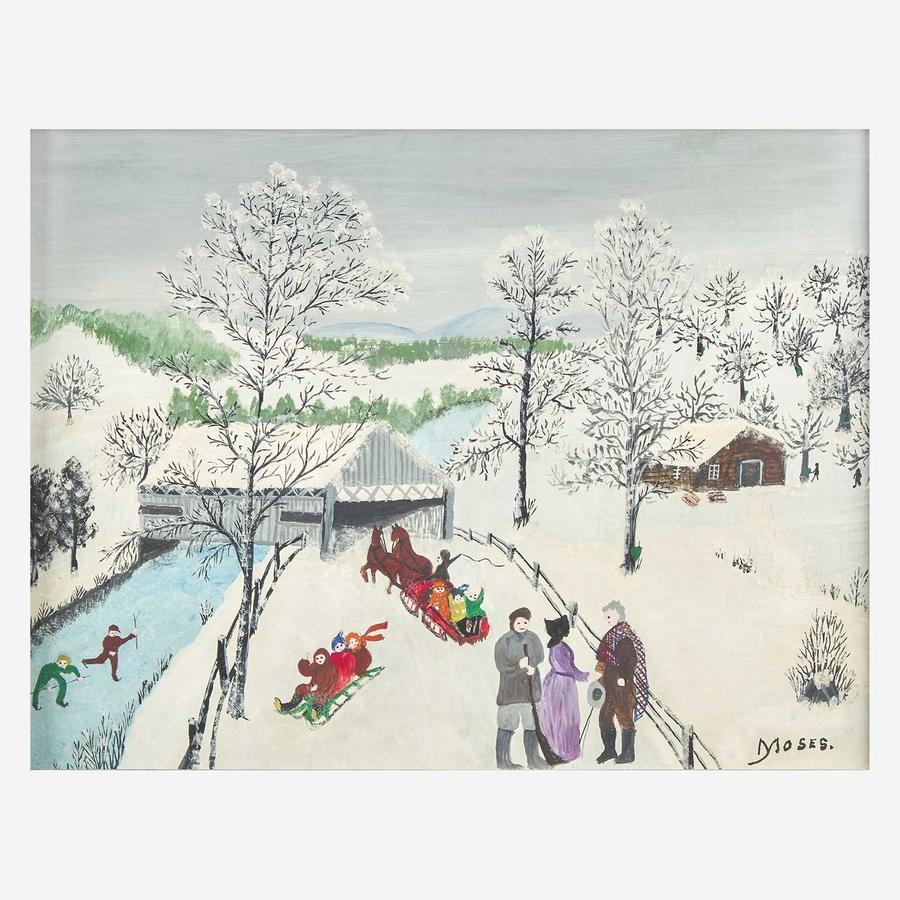


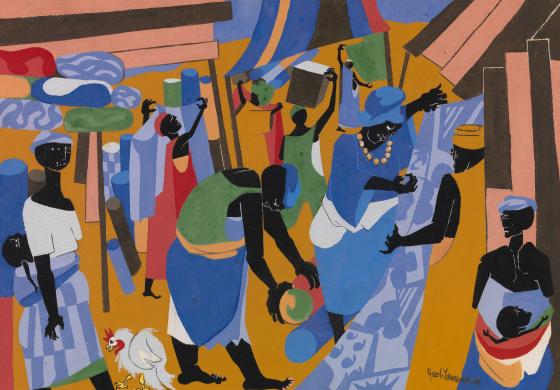












































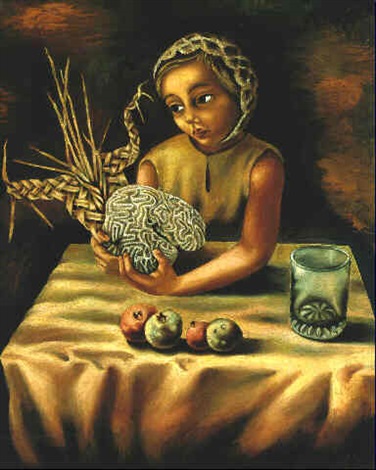


































































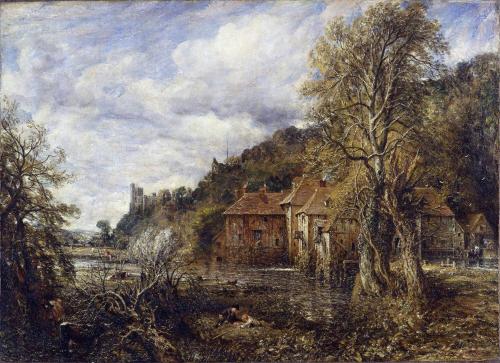





















.jpg?mode=max)


